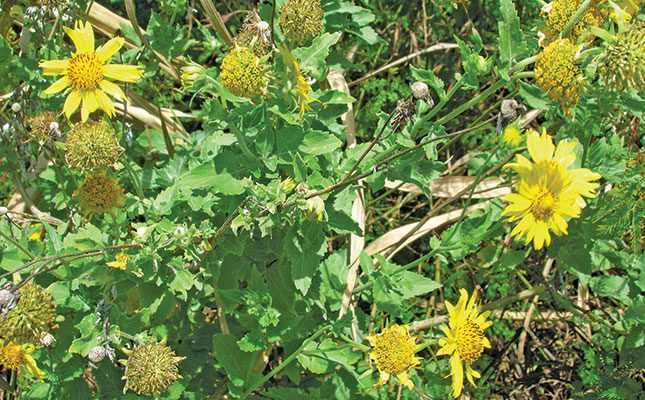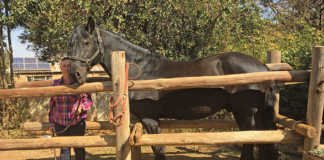
Photo: Wikimedia Commons
Commonly referred to as Verbesina encelioides, wild sunflower contains the toxic compound galegine. It has recently been reported in clinical cases of intoxication in sheep and cattle in several provinces in South Africa, except Mpumalanga and KwaZulu-Natal.
The same plant has been reported causing similar clinical signs in other countries. No studies have been conducted on the toxic effects of wild sunflower in South Africa. However, there is evidence of wide distribution of the plant.
We have embarked on an investigation to determine the concentration of galegine in different geographical localities in South Africa. To measure the concentration of galegine, the identification and collection of the plant material is needed.
Therefore, we appeal to farmers and people in the field to assist with plant collection (aerial parts of 10 plants plus GPS coordinates) if it is present on farms, as well as reporting any suspected cases of intoxication.
The information or any further questions can be emailed to Dr Asive Luningo, via Madelyn de Wet [email protected]. Clinical signs of intoxication include dullness, anorexia, trembling, weakness, recumbency, tachycardia, difficulty in breathing, and cyanosis.
Pathological findings reported include hydrothorax, pulmonary oedema, foam accumulation in the airways, red-mottled liver, and pericardial effusion. The animals die acutely due to respiratory arrest.
Aggressive weed
Verbesina encelioides (wild sunflower or golden crownbeard) belongs to the Asteraceae family. It is an aggressive weed that invades pastures, orchards and forest areas in tropical and subtropical regions.
It can survive under various climatic conditions, including droughts and high temperatures.
A single flower can produce between 600 and 2 100 seeds, which are readily dispersed by light winds and can easily adhere to wool, clothing, fibrous material, and animal coats.
Description of the plant
- It is an erect annual, herbaceous plant typically reaching heights of 0,3m to 1,6m.
- The lower leaves on branches opposite from the stem and the upper leaves are arranged alternately.
- The stems and leaves are covered in short, dense, white hairs.
- The leaves are triangular-shaped with coarsely, unevenly serrated margins.
- The flowers are yellow, resembling small sunflowers.
- The seeds are greyish brown, flat, winged along the margins and covered with fine hairs.
Current cases of toxicity in sheep
In 2016, sheep from Baltimore, in Limpopo, died after consumption of hay. After evaluation, the feed was found to be heavily contaminated with V. encelioides.
More recently, in July 2023, sudden death in sheep at Graafwater, Western Cape, were reported.
A post-mortem conducted by the veterinarian revealed lesions consistent with V. encelioides poisoning, which was also found in the vicinity. The post-mortem findings included severe pulmonary oedema, foam from the mouth and nostrils, hepatic congestion, and hydrothorax.
In October 2023, a farmer in Thabazimbi, Limpopo, contacted the Toxicology Section of the Department of Paraclinical Sciences at the University of Pretoria to report the presence of a wild sunflower plant on his farm.
Email Dr Asive Luningo at [email protected]










